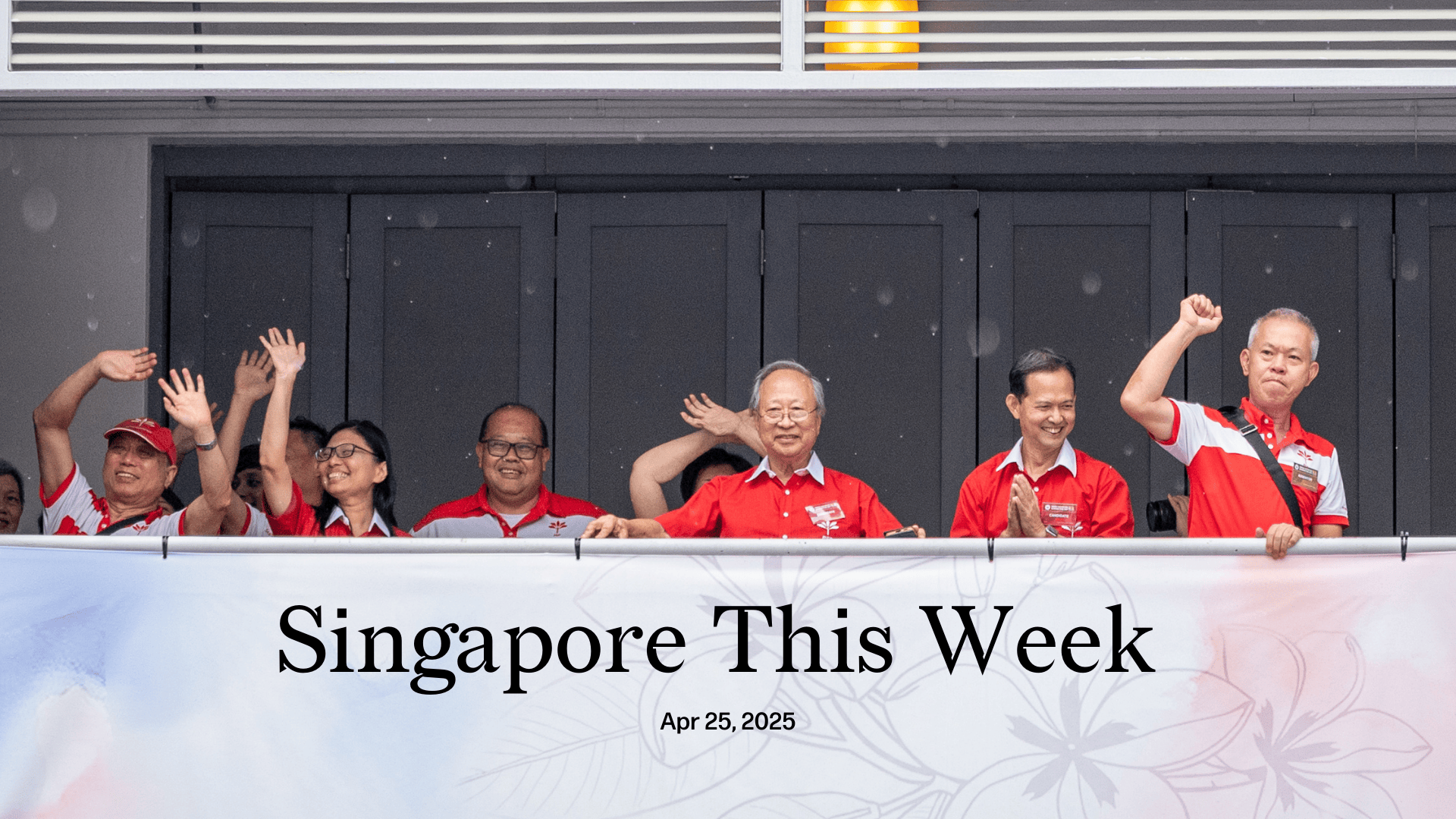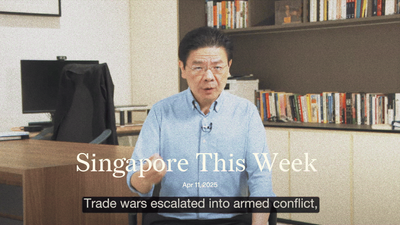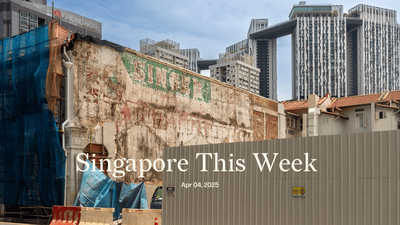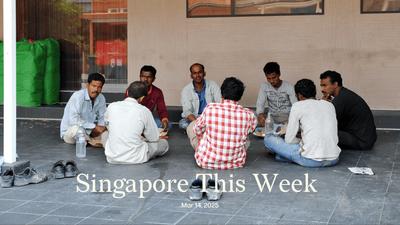Politics: Western battles
The district formerly known as West Coast, where the ruling People’s Action Party (PAP) recorded its narrowest win at GE2020, has been transformed by the ingenious cartographers at the Elections Department into a garbled mess called West Coast-Jurong West GRC. But beneath its name are fascinating electoral dynamics. The PAP’s team is led by Desmond Lee, minister for national development, and also features Ang Wei Neng, Hamid Razak, Cassandra Lee and Shawn Huang. Following the departure of anchor minister S Iswaran because of a corruption scandal, many expected the PAP to draft in another heavyweight to bolster Desmond Lee.
Perhaps they’re confident because of the strong support they’ve consistently received in areas formerly helmed by Tharman Shanmugaratnam, president, which are now part of the GRC. But that’s a risky game. Many voters there would have been voting for the PAP because of Tharman. They may now be attracted to the other side, led by one of Singapore’s most popular politicians. Tan Cheng Bock, former PAP member of Parliament (MP), will again lead the Progress Singapore Party (PSP) team. Leong Mun Wai and Hazel Poa, who’ve served as non-constituency MPs since 2020, are running again, joined by newcomers Sani Ismail and Sumarleki Amjah.
This contest features undercurrents of elitism. The PAP has constantly derided Leong, mocking his imperfect English and folksy ways. Vivian Balakrishnan, foreign affairs minister, was caught in Parliament on a hot mic saying Leong must come from “a lousy school”. The usual fun and games for the elites, but Leong’s unassuming manner resonates with many Singaporeans, tired of classist sneers. Many admire his dogged persistence—and Poa’s as well—as they’ve questioned the PAP in Parliament. The PSP is the closest thing Singapore has to a “PAP split”. If Tan leads his team to victory and takes his seat on the backbenches of “the other side”, it’ll be an historic sight.
In nearby Bukit Panjang SMC, it’s rather refreshing to encounter a contest that’s unchanged. At GE2020, the PAP’s Liang Eng Hwa beat Paul Tambyah of the Singapore Democratic Party (SDP) with just under 54 percent of the vote. Tambyah has kept walking the ground, and is incredibly popular with everybody from public intellectuals to migrant workers. In recent years, he’s been one of the more thoughtful political commentators on screen, creating explainer videos watched by many. This may not be enough to overturn the deficit. Notwithstanding the individual candidates’ popularity, the result will be a key barometer for any broader shift in support for the PAP from 2020 till now.
Politics: Eastern battles
Like adjoining new town Sengkang, Punggol comprises a high proportion of younger voters. The Workers’ Party will hope its impressive team—Jackson Au, Alexis Dang, Harpreet Singh and Siti Alia—can emulate the success of its Sengkang team at GE2020. Yet the PAP’s Punggol team is also formidable. Alongside “newbie” Gan Kim Yong, deputy prime minister, are three incumbents familiar to residents—Janil Puthucheary, Sun Xueling and Yeo Wan Ling—the first two of whom are also ministers of state.
The party will hope they can emulate the success of its East Coast team at GE2020, when then deputy prime minister, Heng Swee Keat, was parachuted in to head off another promising WP starlet, Nicole Seah, winning narrowly. But will the PAP also come up with a Punggol Plan to rival its East Coast Plan? That’s what the comics and meme factories will really be looking out for.
Tampines will see a four-way contest, with the National Solidarity Party (NSP) and People’s Power Party (PPP) in the fray alongside the PAP and the WP. The GRC “is ripe for the taking”, said Walid Abdullah, NTU associate professor, because its relatively high Malay-Muslim population is unhappy with the PAP’s Muslim leaders, particularly Masagos Zulkifli, minister for social and family development, who leads its team there.
An incendiary social media post by Calvin Cheng, former nominated member of Parliament and PAP apologist, offering to send local Palestine supporters to Gaza, reignited an issue that was dying down. Many are upset that Masagos took weeks to denounce Cheng’s comments. The WP team is headed by Faisal Manap, sitting MP from Aljunied GRC. PAP fans, as they’ve long done, have started trying to smear Faisal as a Muslim extremist. By stirring the pot, they’ll hope to attract more of the non-Muslim vote.
Sign up for Jom’s weekly newsletter
Our newsletters combine weekly updates about Singapore with a “build-in-public” narrative, in which we tell readers about our start-up journey.
No spam. Unsubscribe anytime.
Politics: Was Pritam too conservative?
For years, some WP fans have been calling for a more expansionist strategy. That might involve its more popular leaders, such as Pritam Singh and Sylvia Lim, leaving the relatively safe shores of Aljunied GRC to contest in riskier, if possibly winnable, turf nearby. Singh’s usual rebuttal, repeated again last week, is to point to the narrowness of the margin of victory at GE2015. Never mind that it was an odd year filled with general PAP bonhomie, and much has changed since.
Voters in Marine Parade-Braddell Heights GRC, our most absurdly shaped district, have every right to be indignant with the system at large. While the rest of the country will collectively shape our future on May 3rd, they’ll simply await their new representatives from the PAP, the first GE walkover since 2011. Residents might blame the WP, which has been active in the area for years. Other opposition parties also wished the WP had informed them, so they could possibly contest. But the party’s longstanding policy is not to engage in negotiations with others.
The real culprit is a structural one: excessive gerrymandering and insufficient time between the boundaries report and Polling Day. All this benefits the incumbent at the expense of all opposition parties. Residents eager to vote the next time should lobby their PAP MPs for more liberal and transparent electoral processes—or lobby their friends around Singapore to vote for parties that champion them.
Some further reading: In “How did I get here? Gerrymandering in Singapore”, we examine the work of the latest Electoral Boundaries Review Committee.
Society: The plot thickens
As Singaporeans decide how they’ll vote on May 3rd, some constituents are dealing with a civic conundrum of a different kind—the line between public and private in our communal, urban green spaces. Since the National Parks Board (NParks) started the allotment gardening scheme two decades ago, theft and vandalism have regularly prevented gardeners from enjoying the fruits of their labour. Despite residents placing strongly worded signs, netting and locks, unseen, unsought hands have continued to harvest their veggies and flowers. One gardener even installed a CCTV camera, but was asked to remove it by NParks because the planter beds, although leased at S$62.13 annually for three years via a balloting system, are public spaces.
Surveillance is one way to deter theft, but more civilised and sustainable would be for all to respect each other’s right to property, even if they exist in a communal place. Planting our own food may not seem at once like a democratic act of much import, compared to say voting for the politicians who’ll run the country. But community allotment plots like the ballot box are ways in which we can participate in the politics of civic engagement—from food security to national security. One that directly impacts not just our own futures, but that of our fellow citizens too.
History weekly by Faris Joraimi
Change is in the air, and so is poetry. On Nomination Day, three candidates—Jufri Salim and Damanhuri Abas of the SDP, and Hazlina Abdul Halim of the PAP—worked poems into their speeches, specifically the Malay genres of pantun and syair. Over three decades ago, the literary historian Amin Sweeney said that traditional Malay poetry was being subject to a slow death in the classroom, as modern techniques of memorisation and composition wore away what he thought to be the Malays’ innate gift of the gab. It turns out that even in Singapore, the Malay oral tradition is not only living, breathing, and world-building; it’s part of a modern democratic process. Who said what?
Jufri:
Ikan dibeli untuk dimasak
Buat gulai ikan haruan
Ini kali fikir masak-masak
Jangan terkulai tidak keruan
A fish is bought for cooking
Make it into a snakehead curry
This time really think it through
Don’t be limp and uncertain
A stir to action, no doubt. Meanwhile, Hazlina called for unity and common cause: Bagai serai kita serumpun / Bagai sirih kita sesusun (“Like lemongrass, we share one root / Like betel leaves, we are arranged in one order”). Any room for rank weeds and fungi? This year’s bumper-crop of verse was possibly inspired by the WP’s Fadli Fawzi, who opened his 2020 Nomination Day speech with a pantun. But according to Fadli himself in a Straits Times (ST) interview, there’s always been a custom of opening formal gatherings with pantun, while prominent critics, activists, and leaders in Malay political history were often also poets. The laureate this round, however, is Damanhuri, whose fiery eight-line syair included a razor-sharp cut at Masagos Zulkifli’s “misuse” of the historic duel between Hang Tuah and Hang Jebat in the old Malacca sultanate. Conventionally, the clash between loyal Tuah and rebellious Jebat is read as a commentary on the destructive consequences of a king’s injustice, pitting subjects against each other. While unveiling the Tampines GRC slate last week, however, Masagos brought up the story as a warning: national disunity leads to foreign invasion. It was an impressive assault on context to suit the moment’s message. As poetry opens up political futures, it also opens up history, joined together in a spell of sound.
Arts: Cheongsam couturier’s curtain call
Laichan Goh, who slipped women into sexy silhouettes—and also stitched showstoppers for the Singapore stage—died last week, aged 62. For seven years, the self-taught master of the contemporary cheongsam had struggled privately with brain cancer; the 13th of 15 children died surrounded by dozens of loved ones at Assisi Hospice. His younger brother, Eddie, will be taking over his eponymous atelier. Fashionistas and theatremakers alike mourned his departure. Tjin Lee, the entrepreneur behind the former Singapore Fashion Week, chose Goh for the coveted closing show of its final edition in 2017, calling him “not only a great designer but a great soul”. Goh brought a different kind of sensuality to the iconic Chinese garment. His insistence on softness, both of material and mood, meant breaking the rules of previous generations of stiffer, starchier cheongsams. Less suit-of-armour, more made-to-suit-her. Petals cascade down bodices, gossamer capelets graze the shoulders, and vertebral columns of tiny buttons ripple as his models float down the runway. He studied the traditional way of making cheongsams from a Shanghai-trained shifu, then studied the lifestyle and anatomy of the modern woman: gone were the 24-inch Maggie Cheung waists and rigid postures, replaced by working women on the go who needed to drive in a cheongsam, wrangle kids and groceries, and hunch over a desktop. Goh chose to drape and cut his fabric on the bias—diagonally, instead of vertically—so it would stretch with the body and forgive the fluctuations of weight. “I love and respect the traditional cut, but it has to evolve to survive,” he told Her World. Still, he kept some traditional touches, including buttons that run from the collar to the hip. “I like this detail because I think women should sometimes slow down a little and take time to enjoy the ritual of getting dressed.”
If Goh’s craft was the cheongsam, his art was costuming for the stage. Costume designers are often on the frontlines when it comes to soothing performers’ body image anxieties. Goh was part of this backstage contingent of sartorial caregivers: how to make a performer look (and feel) good—even when their character doesn’t. Ivan Heng, founding artistic director of theatre company Wild Rice, recalled the designer’s stage debut: the Singapore premiere of “Emily of Emerald Hill” in 2000. This monodrama, starring a cross-dressing Heng as the titular character, quickly became the company’s calling card. Goh sheathed Heng in a striking black gown with a generous bustle, deploying the stiffer taffeta alongside the softer French lace for a Peranakan matriarch whose steely exterior masks a vulnerable interior. Heng wrote in his social media eulogy: “[Goh] always designed with deep empathy — thinking about who the characters were, the circumstances they were in, and how the clothes could speak for them.” He left this world as he did the stage: sent off by a quartet, surrounded by flowers.
Arts: Old books, new covers
Book lovers braced themselves two months ago when they were greeted by harried staff reshelving books in dim lighting at Books Kinokuniya’s beloved store in Takashimaya Shopping Centre. But the persistent chain is making a small comeback with a brick-and-mortar outlet at Raffles City Shopping Centre, stemming an otherwise depressing tide of shuttering stores. “The new Kinokuniya store is conceived as a quiet discovery – designed not to shout, but to invite,” Tan Kay Ngee, the award-winning architect behind its labyrinthine flagship store, told ST. Readers craving the dark blue alcoves of Books Kinokuniya’s signature shelves can nestle in the new outlet’s Blue Room, “a serene space...which evokes a quieter, more contemplative mood for immersive reading experiences”. You’ll be able to find yourself a nook in this 3,433 sq ft space on the mall’s third floor come August.
If you’re looking for an immersive reading experience further east, the new Marine Parade Community Building, housing the neighbourhood’s public library, is slated to open in the first quarter of next year. Architecture and heritage buffs had mourned the demolition of the previous building, which since 2000 had sat prominently on the corner of Marine Parade Road and Still Road South. When razed in 2023, we also lost Singapore’s largest art installation. Cladding the north-east facade of the building was Thai architect Surachai Yeamsiri’s “Texturefulness of Life”, a mix of curved slabs of stone, tiny mosaic tiles and metal panelling in skin and earth tones that swept towards a spiral resembling a large eye. The 63m by 12m abstract artwork was selected by a panel of international judges from 66 entries across South-east Asia and Singapore. Also displaced: one of Singapore’s most established theatre companies, The Necessary Stage, which for decades had occupied a black box theatre in the basement. While the new building will boast more accessible, upgraded amenities, artists’ impressions of its exterior call to mind the ubiquitous design of more recent community hubs, such as Heartbeat @ Bedok or Our Tampines Hub, with their tessellated geometric facades underscored by manicured ribbons of greenery. Till then, you can browse and borrow books at a pop-up book dispenser that the National Library Board’s set up outside a FairPrice Finest supermarket in nearby Marine Parade Central—funnily enough, in the very red-brick building where the original neighbourhood library (1978-2000) used to be.
Tech: Singapore from day one
The Economic Development Board (EDB) has joined the fierce competition for top entrepreneurial talent with its Global Founder Programme (GFP). GFP targets founders with prior success in scaling start-ups, unicorns, or deep-tech firms. The programme will provide them with access to Singapore’s R&D ecosystem, talent pool, and exclusive investor and corporate partner networks. Other carrots being dangled: fast-tracked business set-up; talent recruitment support; and eligibility for the coveted Overseas Networks & Expertise Pass work visa. By connecting participants with MNCs, SMEs and research institutes, the EDB hopes to accelerate commercialisation while creating leadership opportunities for Singaporeans.
The focus on previously successful founders is a strategic bet. A Harvard Business School study found that while first-time founders have a 21 percent chance of success, second-timers who succeeded in their first venture have a 30 percent chance of doing so again. GFP is highly selective and cohort sizes are limited, reflecting a shift from broad start-up support to curated, high-impact ventures. Experienced founders could help build transformative companies faster than grassroots start-up, and burnish Singapore’s credentials as an innovation hub. Yet, the programme’s exclusivity may overlook promising first-time founders. After all, Mark Zuckerberg, Bill Gates and Jeff Bezos were fledgling entrepreneurs who built globally renowned, billion-dollar companies.
If you enjoy Jom’s work, do get a paid subscription today to support independent journalism in Singapore.








